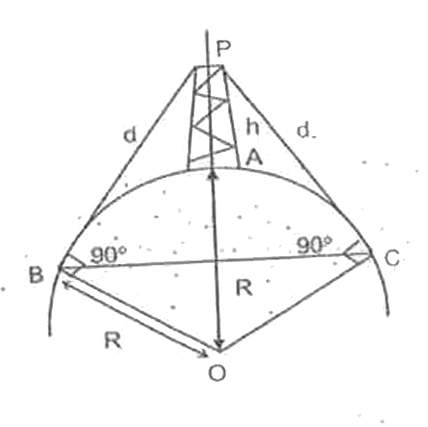In conventional television, signals are broadcast from towers to home receivers. Even when a receiver is not in direct view of a tower because of a hill or building, it can still intercept a signal if the signal diffracts enough around the obstacle, into the obstacle's "shadow region." Previously, television signals had a wavelength of about 50 cm, but digital television signals that are transmitted from towers have a wavelength of about 10 mm. (a) Did this change in wavelength increase or decrease the diffraction of the signals into the shadow regions of obstacles? Assume that a signal passes through an opening of 6.0 m width between two adjacent buildings. What is the angular spread of the central diffraction maximum out to the first minima) for wavelengths of (b) 50 cm and (c) 10 mm?
Text Solution
(a) diffraction effects in general would decrease, (b) 9.6, (c) 0.010 m.
|
Topper's Solved these Questions
- INTERFERENCE AND DIFFRACTION BOOK - RESNICK AND HALLIDAYCHAPTER - INTERFERENCE AND DIFFRACTION EXERCISE - PRACTICE QUESTIONS (Single Correct Choice Type)
66 Videos
- INTERFERENCE AND DIFFRACTION BOOK - RESNICK AND HALLIDAYCHAPTER - INTERFERENCE AND DIFFRACTION EXERCISE - PRACTICE QUESTIONS (More than One Correct Choice Type)
23 Videos
- INTERFERENCE AND DIFFRACTION BOOK - RESNICK AND HALLIDAYCHAPTER - INTERFERENCE AND DIFFRACTION EXERCISE - CHECKPOINT
6 Videos
- HYDROGEN ATOMBOOK - RESNICK AND HALLIDAYCHAPTER - HYDROGEN ATOMEXERCISE - PRACTICE QUESTIONS(Integer Type)
6 Videos
- MAGNETIC FIELDS DUE TO CURRENTSBOOK - RESNICK AND HALLIDAYCHAPTER - MAGNETIC FIELDS DUE TO CURRENTSEXERCISE - Practice Question (Integer Type)
4 Videos
Similar Questions
Knowledge Check
Audio in television signals are
Afrequency modulatedBamplitude modulatedCboth frequency and amplitude modulatedDphase modulatedAudio signal cannot be transmitted because
AThe signal has more noiseBThe signal cannot be amplified for distance communicationCThe transmitting antenna length is very small to designDThe transmitting antenna length is very large and impracticableAudio signal cannot be transmitted because
Athe signal has more noise.Bthe signal cannot be amplified for distance communication.Cthe transmitting antenna length is very small to design.Dthe transmitting antenna length is very large and impracticable.
How the television signals are propagated, derive the formula for the area that a T.V. signal will cover

View SolutionAudio signal cannot be transmitted because
View SolutionIn a synapse, chemical signal is transmitted from
View SolutionIn a synapse, chemical signal is transmitted from:
View SolutionRadio waves with frequencies higher than television signals are
View Solution
